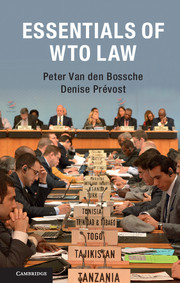Book contents
- Frontmatter
- Contents
- List of figures and tables
- Preface
- List of abbreviations
- Table of cases
- 1 International trade and the law of the WTO
- 2 Rules on non-discrimination
- 3 Rules on market access
- 4 Trade liberalization and other societal values and interests
- 5 Rules on unfair trade
- 6 Rules regarding harmonization of national regulation
- 7 The institutional aspects of the WTO
- 8 The WTO dispute settlement system
- Online resources
- Index
- References
5 - Rules on unfair trade
- Frontmatter
- Contents
- List of figures and tables
- Preface
- List of abbreviations
- Table of cases
- 1 International trade and the law of the WTO
- 2 Rules on non-discrimination
- 3 Rules on market access
- 4 Trade liberalization and other societal values and interests
- 5 Rules on unfair trade
- 6 Rules regarding harmonization of national regulation
- 7 The institutional aspects of the WTO
- 8 The WTO dispute settlement system
- Online resources
- Index
- References
Summary
Introduction
WTO law provides for detailed rules with respect to dumping and subsidization – two specific trade practices commonly considered to be unfair. The following sections will briefly examine the WTO rules concerning these unfair trade practices.
Rules on dumping
The WTO rules on dumping are contained in Article VI of the GATT 1994 and in the Anti-Dumping Agreement.
‘Dumping’ is defined in Article 2.1 of the Anti-Dumping Agreement as bringing a product onto the market of another country at a price less than the ‘normal value’ of that product.
WTO law does not prohibit dumping. Since prices of products are usually set by private companies, not by governments, WTO law does not regulate dumping itself. Instead, it governs the actions of WTO Members in response to dumping. WTO Members are allowed to take measures to protect their domestic industry from the injurious effects of dumping. Pursuant to Article VI of the GATT 1994 and the Anti-Dumping Agreement, WTO Members are entitled to impose anti-dumping measures if three substantive conditions are met:
• there is dumping;
• the domestic industry producing the like product in the importing country is suffering material injury (or there is a threat of such material injury); and
• there is a causal link between the dumping and the injury.
These requirements have been worked out in detail in Articles 2 to 4 of the Anti-Dumping Agreement. The Anti-Dumping Agreement further provides rules concerning anti-dumping investigations and the imposition and collection of anti-dumping duties.
WTO Members have frequent recourse to anti-dumping measures, and these measures are regularly the subject of trade disputes between WTO Members.
More than three thousand anti-dumping measures have been imposed by WTO Members since the establishment of the WTO. Between 1 January 1995 and 31 December 2014, the most frequent user of anti-dumping measures was India (534 measures), followed at a distance by the United States (345 measures), the European Union (298 measures) and Argentina (228 measures). This makes clear that the days when anti-dumping measures were almost exclusively used by developed-country Members are over. China has been by far the biggest target of anti-dumping measures (759 measures), followed by Korea (213 measures), Chinese Taipei (173 measures) and the United States (162 measures).
- Type
- Chapter
- Information
- Essentials of WTO Law , pp. 141 - 177Publisher: Cambridge University PressPrint publication year: 2016



